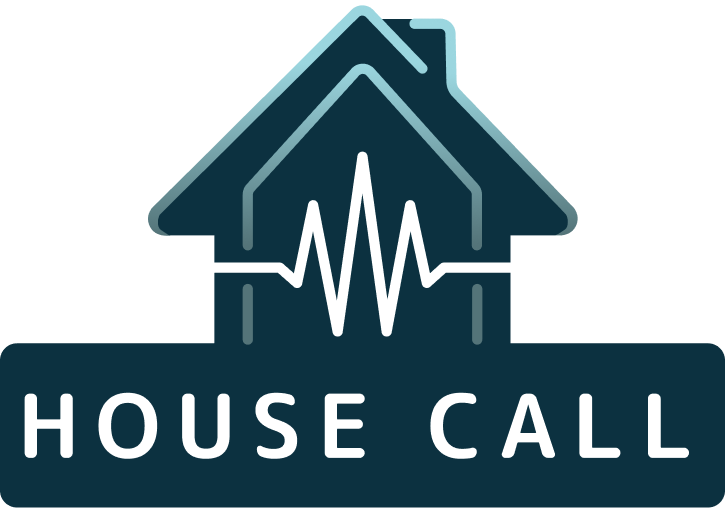Nurse Practitioner vs. Doctor: What’s the Difference and Who Should You See?
Today, getting care doesn’t always mean sitting for hours in a waiting room. Nurse Practitioners (NPs) are transforming access to healthcare by bringing skilled, evidence-based treatment directly to patients even at home through platforms like House Call The App.
What Is a Nurse Practitioner (NP)?
A Nurse Practitioner (NP) is an Advanced Practice Registered Nurse (APRN) with graduate-level training. NPs can diagnose, treat, prescribe medications, and manage both acute and chronic illnesses.
They focus on patient education, prevention, and whole-person wellness which is the hallmark of the nursing model of care.
Nurse Practitioner Education & Training
- Bachelor of Science in Nursing (BSN) → RN license (NCLEX-RN)
- Master of Science in Nursing (MSN) or Doctor of Nursing Practice (DNP)
- 500–1,000+ hours of supervised clinical experience
- National board certification (AANP or ANCC)
- State licensure as an APRN
In Florida, NPs must be licensed through the Florida Board of Nursing and may practice independently after completing 3,000 hours under physician supervision and additional pharmacology training (Florida Statutes §464.0123).
What Is a Doctor (MD or DO)?
A doctor holds either a Doctor of Medicine (MD) or Doctor of Osteopathic Medicine (DO) degree. Both types of physicians complete extensive medical training emphasizing diagnosis, disease management, and surgery.
MD/DO Education & Training
- Bachelor’s degree (4 years) with pre-med prerequisites
- Medical school (4 years)
- Residency (3–7 years) depending on specialty
- Board certification through ABMS (MD) or AOBMS (DO)
- Licensure through state medical boards
MDs and DOs both diagnose, treat, and prescribe medications and can perform surgical procedures.
NP vs Doctor: Side-by-Side Comparison
| Nurse Practitioner (NP) | Doctor (MD or DO) |
Education Length | 6–8 years (BSN + MSN/DNP) | 11–15 years (Bachelor’s + Med School + Residency) |
Degree | Master’s or Doctorate in Nursing | Doctor of Medicine (MD) or Osteopathic Medicine (DO) |
Licensing Board | State Board of Nursing | State Board of Medicine |
Scope of Practice | Diagnose, treat, prescribe; independent or collaborative by state | Diagnose, treat, prescribe; perform surgery |
Common Settings | Clinics, hospitals, telehealth, home visits | Hospitals, clinics, surgical centers |
Scope of Practice: National vs Florida
In many states (like Arizona, Colorado, and Washington), nurse practitioners have full practice authority meaning they can diagnose and prescribe without physician oversight.
In Florida, nurse practitioners can now qualify for independent practice in primary care after meeting state requirements. This change has expanded access to care in areas with physician shortages especially for home health, wellness, and chronic care management.
When to Choose a Nurse Practitioner vs. a Doctor
Situation | Likely Option |
Minor illness or infection (cold, flu, sinus) | Nurse Practitioner |
Routine check-up, medication refill, lab order | Nurse Practitioner |
Chronic condition management (diabetes, hypertension) | Nurse Practitioner (with referral to Doctor if needed) |
Surgery or complex medical care | Doctor |
Emergency or trauma | Emergency physician / hospital |
Care That Comes to You
Many doctors and nurse practitioners now offer at-home care. Whether you need help recovering from surgery, managing a chronic condition, or getting IV hydration and wellness treatments at home, licensed NPs, DOs, and MDs on House Call The App make healthcare simple and accessible.
Frequently Asked Questions
Q: Do NPs make diagnoses and prescribe medications?
A: Yes. NPs are licensed to diagnose and prescribe in all 50 states.
Q: Are NP visits covered by insurance?
A: Yes. Most insurers, including Medicare and private plans, reimburse NP services.
Q: Can I see an NP instead of a doctor for primary care?
A: Absolutely. NPs provide comprehensive care for most everyday medical needs.
References
- Florida Statutes. 2024. Nurse Practice Act, Chapter 464. https://www.flsenate.gov/Laws/Statutes/464
- American Association of Nurse Practitioners (AANP). 2025. State Practice Environment Map.https://www.aanp.org
- Florida Board of Nursing. 2024. Advanced Practice Licensure and Scope. https://floridasnursing.gov
- Journal of the American Association of Nurse Practitioners. 2023. Comparative Outcomes of NP vs Physician-Led Primary Care. https://journals.lww.com/jaanp
- American Medical Association. 2024. Education and Licensure Requirements for Physicians. https://www.ama-assn.org

 Login
Login